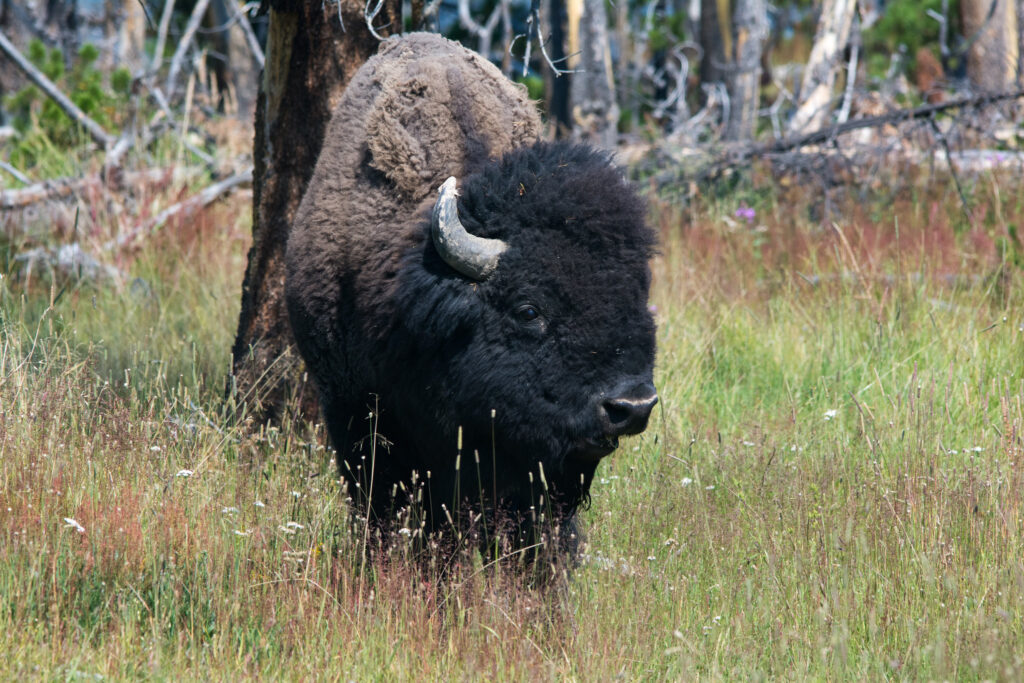
The natural world has an important part to play in mitigating the effects of climate change. We mostly think about the role of plant life which absorbs carbon in trees, grasses, and other flora. However, a new study published by Oxford University looks at the role of large wild animals in restoring ecosystems and reducing the effects of climate change.
According to the study, there are three important ways in which large animals such as elephants, rhinos, giraffes, whales, bison, and moose can potentially mitigate the effects of climate change: carbon stocks, albedo, and fire regimes.
When large herbivores graze, they disperse seeds, clear vegetation, and fertilize soil. All of these things build more complex and resilient ecosystems which helps to maintain and increase carbon stocks in the soil and in plant tissues thereby helping to reduce CO2 in the atmosphere.
Grazing large animals trample vegetation which opens up areas of dense vegetation to create open mixes of grass and shrubs and can reveal snow-covered ground in cold regions. Such open habitats are lighter in color (higher in albedo) and reflect more solar radiation into the atmosphere, cooling the Earth’s surface rather than heating it up.
Large grazing animals can lessen wildfire risk by browsing on woody vegetation that would otherwise fuel the fires and also by creating paths that act as firebreaks.
In marine ecosystems, whales and other large animals fertilize phytoplankton, which capture some 37 billion tons of CO2 each year.
Overall, large animals are an important part of the natural world’s ability to reduce the effects of the changing climate by helping with localized adaptation to the changes taking place in ecosystems.
**********
Web Links
Large mammals can help climate change mitigation and adaptation
Photo, posted August 20, 2017, courtesy of Jon Niola via Flickr.
Earth Wise is a production of WAMC Northeast Public Radio.
Leave a Reply